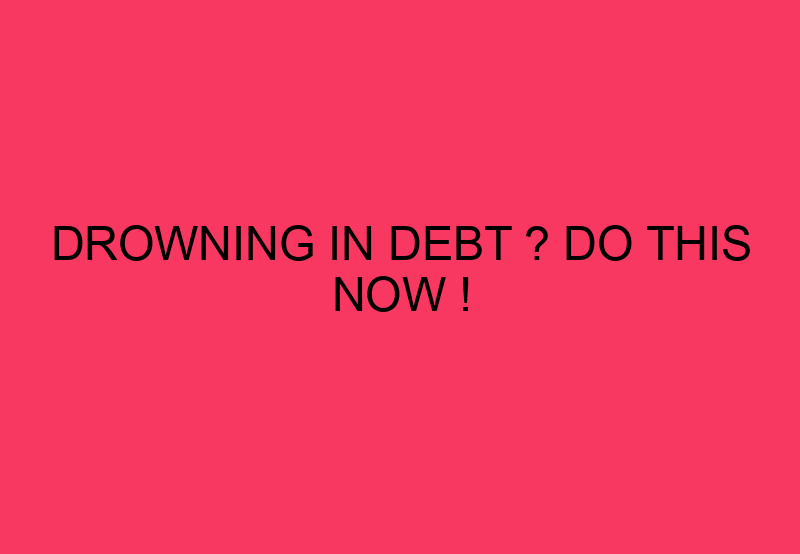The stress of mounting debt may be overwhelming. Young consumers often feel like they have a lot riding on their shoulders because of especially for high credit card debt, mounting student loan debt, and regular auto payments.
More specifically, 44% of those between the ages of 18 and 34 reported feeling like they were “drowning in debt” in a poll performed by Select and Dynata. As Kristen Ricupero, a financial coach and consultant at Financial Fitness Coaching, points out, it might be tough to envision a way out of debt, but the greatest move these individuals can do is to take action.
Drowning in Debt Meaning
Ricupero says, “It doesn’t need to be enormous in order to be successful.” To paraphrase Benjamin Franklin, “Money is more emotionally and affectively charged than it is about the statistics.”
Her argument is that you may start chipping away at your debt with modest victories, such as putting any spare change you have toward your credit card amount. You may use this as inspiration to push you on with the next baby step, and so on, until your debt is history.
-
Do something, no matter how tiny
Due to their overwhelming debt, many people feel stuck in their lives and unable to make progress toward their aspirations. It’s important to remember that even baby steps in the correct way add up.
“The difficulty of feeling encumbered by debt is not because we don’t generate enough money to erase it, but because we don’t know where to start and wherever our money is going,” Ricupero argues.
She suggests that anyone who is feeling overwhelmed by debt have a look at their financial records to gain perspective on their spending habits. By doing so, you may get a clearer picture of your spending habits and identify potential cost-cutting areas. To pay down debt, you should prioritize finding extra cash.
-
Pick one outstanding bill and pay it in full.
Most people who are stressed out by their financial situation have many outstanding debts, such as multiple credit card bills, substantial student loan debt, or a sizable auto loan. Decisions about which debts to pay off first are not always easy to make.
In order to keep your accounts current and your credit score in good shape, you need to make at least minimum payments on all of your other bills. The next step is to develop a method for paying back your debts.
There are two approaches to debt repayment: the snowball technique, in which the smallest balance is paid off first, and the balance with the highest interest (avalanche method).
Once you know how much extra money you can put toward your debt, Ricupero advises putting it all into one sum. Among the “worst blunders” she sees that puts individuals in debt for longer is spreading out that additional income to pay down numerous amounts at once.
-
Pay off your debts by switching to a new loan.
In addition to making regular payments, refinancing your debt can help you pay it off faster and with less interest. The purpose of a refinancing is to get new loan conditions that provide a more positive interest rate. Refinancing might help you save thousands of dollars over the life of your loan.
Although refinancing may be an option, it is crucial to examine the associated costs. The new loan should still result in a net savings even if it has higher costs. If you can’t save money by refinancing, you should keep your health loan.
What to Do if You’re Drowning in Debt
- Get on a budget
- Cut back on the extras
- Pause all investing.
- Don’t take on any new debt.
- Increase your income.
- Start working the debt snowball.
- Stop the comparison trap.
- Start (or keep) working the Baby Steps.
